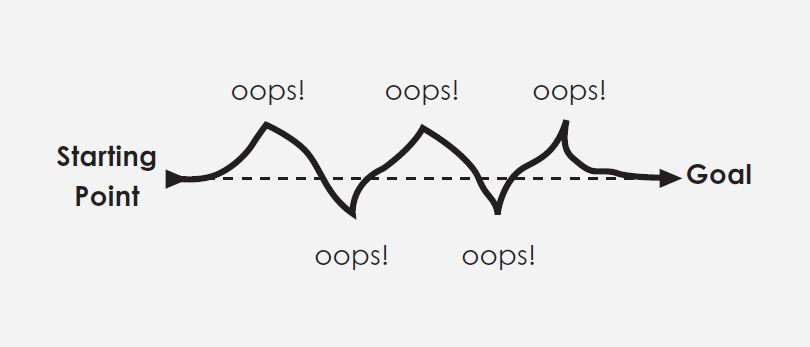In Feel the Fear and Do It Anyway, Susan taught us about how to make a No-Lose Decision. Part of that decision-making process is knowing that if you find you are not on the right path, you can change your mind and adjust your path to the place you need to be. This is the example she used in the book.
In his book Actualizations, Stewart Emery presents an excellent model for changing your direction in life. He learned it while seated on the flight deck of an airplane on the way to Honolulu. He noticed a console, which was identified by the pilot as the inertial guidance system. The purpose of the system was to get the plane within one thousand yards of the runway in Hawaii within five minutes of the estimated arrival time. Each time the plane strayed off course, the system corrected it. The pilot explained that they would arrive in Hawaii on time in spite of “having been in error 90 percent of the time.” Emery takes it from there, stating: “So the path from here to where we want to be starts with an error, which we correct, which becomes the next error, which we correct and that becomes the next error, which we correct. So the only time we are truly on course is that moment in the zigzag when we actually cross the true path.” From the analogy, we see that the trick in life is not to worry about making a wrong decision; it’s learning when to correct! My concept of the model looks like this:

There are many inner clues that help you know when it is time to correct. The two most obvious are confusion and dissatisfaction. Ironically, these are considered negatives, instead of positives. I know it is hard to accept, but an upset in your life is beneficial, in that it tells you that you are off course in some way and you need to find your way back to your particular path of clarity once again. Your confusion and dissatisfaction are telling you that you’re off track, and, as the Chinese proverb says, “If you don’t change your direction, you’re likely to end up where you’re heading.”
